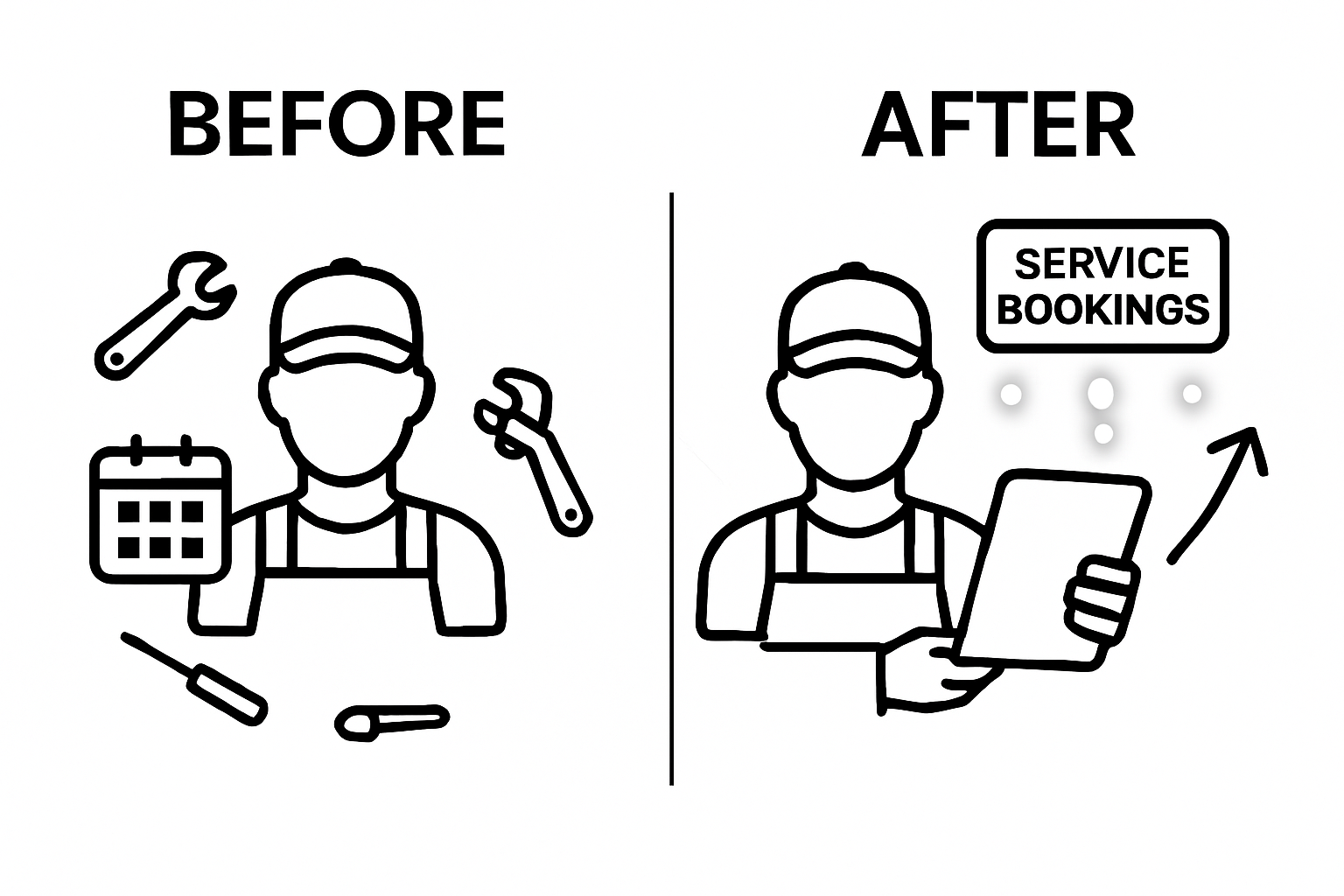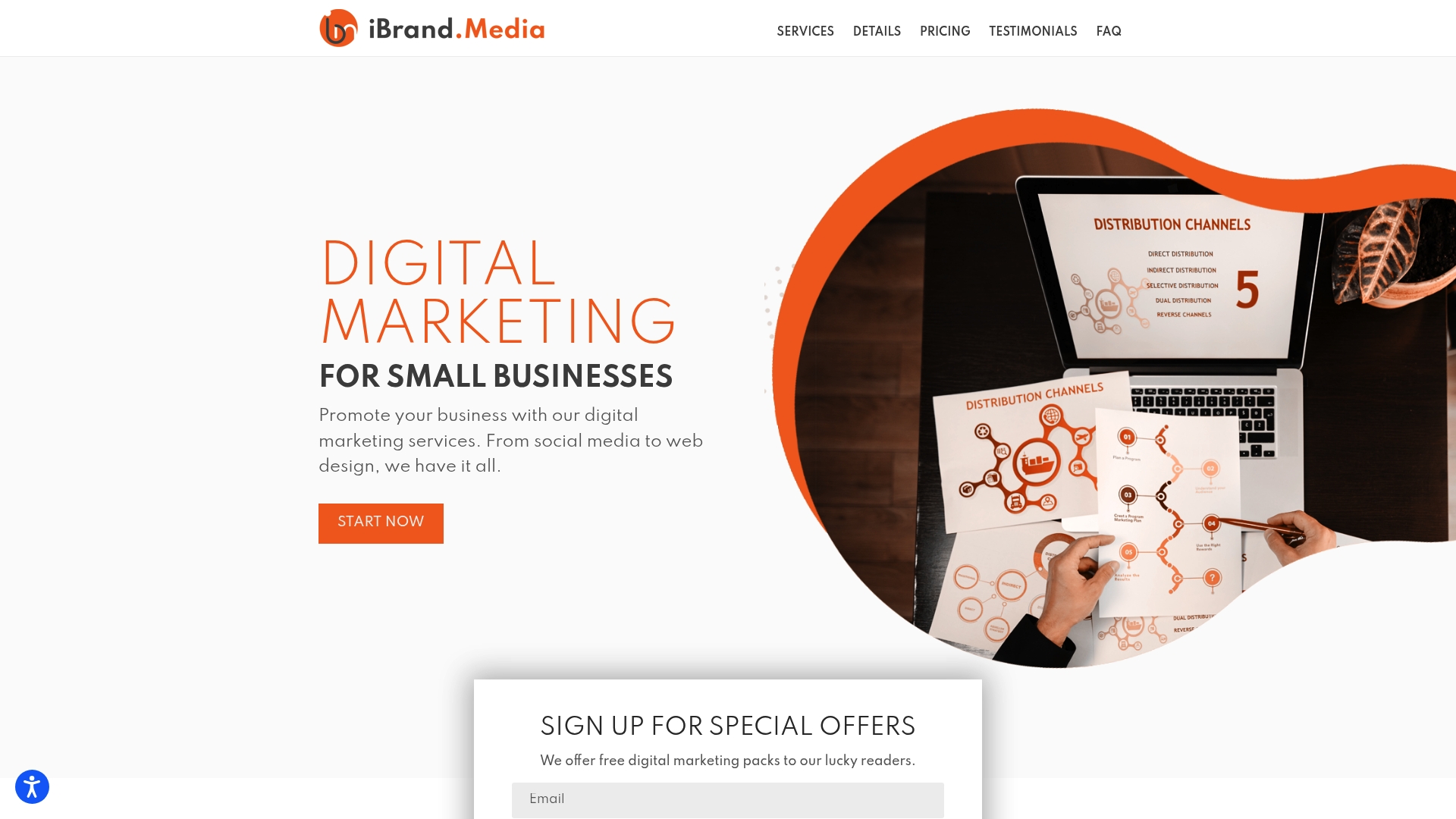Starting a plumbing business online can feel overwhelming with so many steps and decisions to make. But shockingly, most new businesses skip market research, and nearly 45 percent fail within five years because they miss critical planning in the beginning. The surprising part is that laying the right groundwork with smart research, goal setting, and a solid business structure can set you apart before you even launch.
Table of Contents
- Step 1: Research Your Market And Competitors
- Step 2: Develop A Business Plan And Set Goals
- Step 3: Choose A Suitable Business Structure
- Step 4: Create A Professional Website
- Step 5: Implement Digital Marketing Strategies
- Step 6: Monitor Performance And Adjust Plans
Quick Summary
| Key Point | Explanation |
|---|---|
| 1. Conduct Thorough Market Research | Understanding your local market and competitors reveals valuable opportunities and informs service differentiation strategies. |
| 2. Create a Comprehensive Business Plan | A detailed business plan serves as a strategic roadmap for decisions, financial projections, and setting measurable goals. |
| 3. Select an Appropriate Business Structure | Choosing the right structure (e.g., LLC, sole proprietorship) impacts legal liability, taxes, and operational flexibility. |
| 4. Develop a Professional Website | A well-designed website increases credibility, showcases services, and provides essential information to potential customers. |
| 5. Implement Digital Marketing Strategies | Utilize online marketing tools, SEO, and social media to drive visibility and customer engagement effectively. |
Step 1: Research Your Market and Competitors
Starting a successful plumbing business online requires understanding your local market landscape and competitive environment. Market research determines whether your business concept is viable and where opportunities exist. This crucial first step helps you identify potential customer needs, assess existing competition, and develop strategies that set your plumbing service apart.
Begin by gathering comprehensive data about your local plumbing market. Contact your local chamber of commerce or small business administration to obtain demographic information about residential and commercial plumbing service demands. Use online platforms like Google Maps and Yelp to map existing plumbing businesses in your area, noting their service offerings, pricing structures, and customer reviews. Pay special attention to service gaps or underserved customer segments that represent potential business opportunities.
Learn more about increasing local sales strategies that can help you refine your market research approach. Analyze competitor websites thoroughly, examining their service descriptions, pricing models, and marketing approaches. Look for areas where you can differentiate your business – perhaps through specialized services, more transparent pricing, faster response times, or exceptional customer communication.
Utilize free and paid market research tools to gather deeper insights. Websites like SurveyMonkey can help you create quick neighborhood surveys about plumbing service preferences. Online platforms such as Google Trends and social media analytics provide valuable data about search volumes and customer interests related to plumbing services. Track keywords like emergency plumbing, residential pipe repair, and commercial plumbing maintenance to understand local search behaviors.
Your market research should ultimately help you develop a clear understanding of your target customer base, competitive landscape, and unique value proposition. Document your findings in a structured format, creating a preliminary business strategy that will guide your subsequent planning steps. Successful market research transforms raw data into actionable business intelligence, positioning your online plumbing business for strategic growth and long-term success.

Step 2: Develop a Business Plan and Set Goals
Transforming your plumbing business from a concept into a strategic venture requires a comprehensive business plan that maps out your vision, financial projections, and operational framework. A well-crafted business plan serves as your roadmap, guiding every critical decision and providing clarity for potential investors or lenders.
Begin by outlining your business’s core structure and mission. Define your specific plumbing services – will you focus on residential repairs, commercial installations, emergency services, or a combination? Clearly articulate your unique value proposition that distinguishes your business from local competitors. Explore our guide on setting digital marketing goals to help align your business objectives with targeted marketing strategies.
Financial planning represents a critical component of your business blueprint. Calculate startup costs including equipment, licensing, insurance, vehicle expenses, and initial marketing investments. Develop realistic revenue projections based on your market research, considering factors like average service rates, estimated monthly jobs, and seasonal fluctuations in plumbing demand. Recommended financial documentation should include a detailed startup budget, projected income statements, and cash flow forecasts for the first three years.
Establish specific, measurable business goals that provide clear benchmarks for success. These might include targets like acquiring 20 new residential clients per month, maintaining a 4.5-star online rating, generating $10,000 monthly revenue within six months, or expanding service areas quarterly. Break down these larger objectives into smaller, actionable milestones that can be systematically tracked and achieved.
Consider creating contingency plans that address potential challenges such as equipment breakdowns, seasonal revenue variations, or unexpected market shifts. Your business plan should demonstrate flexibility and strategic thinking, showing potential stakeholders that you’ve thoughtfully considered multiple scenarios. Regularly review and update your plan, treating it as a dynamic document that evolves alongside your growing plumbing business. A robust, well-researched business plan transforms your entrepreneurial vision into a structured pathway toward sustainable success.
Step 3: Choose a Suitable Business Structure
Selecting the right business structure is a critical decision that impacts your plumbing business’s legal protection, tax obligations, and operational flexibility.
Below is a comparison of common business structures for plumbing businesses to help you select the best fit for your needs.
| Business Structure | Legal Protection | Tax Filing | Operational Complexity | Best For |
|---|---|---|---|---|
| Sole Proprietorship | None (personal assets at risk) | Personal return | Easiest to set up | Solo owners seeking simplicity |
| Limited Liability Company | Protects personal assets | Flexible (personal or corporate) | Moderate setup & maintenance | Owners wanting asset protection & flexibility |
| Partnership | Varies (depends on type) | Shared among partners | Moderate (requires agreement) | Multi-owner businesses |
Learn more about building your brand online to complement your business structure strategy. For most small plumbing businesses, three primary structures emerge as practical options: sole proprietorship, limited liability company (LLC), and partnership. A sole proprietorship offers the simplest setup with minimal paperwork, allowing you to operate under your personal name and file taxes through your individual return. However, this structure provides zero personal asset protection, meaning your personal wealth could be at risk if your business faces legal challenges.
A Limited Liability Company (LLC) provides the most balanced approach for plumbing entrepreneurs. This structure separates your personal assets from business liabilities, protecting your personal wealth if the business encounters legal issues or significant debt. LLCs offer flexible tax treatment, allowing you to choose between being taxed as a sole proprietorship or a corporation. The moderate filing costs and relatively straightforward maintenance make LLCs an attractive option for small plumbing businesses seeking professional credibility and personal asset protection.
Partnerships work well for plumbing businesses with multiple owners, offering a framework for shared responsibility and investment. General partnerships distribute profits, management duties, and potential liabilities equally among partners. Limited partnerships allow for different levels of involvement and financial contribution, with some partners maintaining limited liability. Carefully draft a comprehensive partnership agreement that clearly outlines each partner’s roles, financial contributions, profit sharing, and dispute resolution mechanisms.
Consult with a local business attorney or certified public accountant to evaluate the specific implications of each business structure for your plumbing venture. They can provide personalized guidance based on your local regulations, business scale, and long-term objectives. Remember that your chosen structure isn’t permanent – you can modify your business entity as your plumbing business grows and evolves. Selecting the right structure is about finding a balance between legal protection, tax efficiency, and operational simplicity.
Step 4: Create a Professional Website
Your online presence begins with a professional website that serves as the digital storefront for your plumbing business. A well-designed website communicates credibility, showcases your services, and provides potential customers with essential information about your expertise and availability. Creating an effective website requires strategic planning and attention to key design and functional elements.
Learn more about building brand awareness online to complement your website development strategy. Start by selecting a user-friendly website builder like WordPress, Wix, or Squarespace that offers professional templates specifically designed for service-based businesses. Look for themes that allow easy customization and include critical features like mobile responsiveness, contact forms, and integrated service booking capabilities. Your website’s design should reflect the professional and reliable nature of your plumbing services, using clean layouts, high-quality images, and clear navigation.
Content becomes the cornerstone of an effective plumbing business website. Develop comprehensive service pages that detail your specific offerings, such as residential repairs, commercial installations, emergency services, and specialized plumbing solutions. Include transparent pricing information, service areas, and your business credentials. Write compelling service descriptions that highlight your expertise, emphasizing your unique selling points like 24/7 availability, licensed technicians, or guaranteed workmanship. Integrate customer testimonials and before-and-after project images to build trust and showcase your professional capabilities.
Technical optimization ensures your website attracts potential customers through search engines.
This table outlines key website features and their purposes to ensure your plumbing business website is effective and professional.
| Feature | Purpose |
|---|---|
| Mobile Responsiveness | Ensures website displays properly on all devices |
| Service Pages | Clearly explains offerings and boosts SEO |
| Transparent Pricing | Builds trust and manages customer expectations |
| Contact Form & Phone Number | Makes it easy for customers to reach you |
| Customer Testimonials | Builds credibility with prospective clients |
| Online Booking Option | Allows clients to schedule services easily |
| Location & Service Areas | Improves local SEO and clarifies coverage |

Step 5: Implement Digital Marketing Strategies
Digital marketing transforms how plumbing businesses attract and retain customers in the competitive online marketplace. A strategic digital marketing approach amplifies your visibility, builds credibility, and drives customer acquisition through targeted online channels.
Successful implementation requires a multifaceted approach that leverages various digital platforms and communication strategies.
Explore our guide on developing a digital marketing plan to enhance your online strategy. Begin by establishing a robust Google Business Profile, which serves as your primary local search listing. Optimize this profile with accurate business information, high-quality service images, current contact details, and consistent operating hours. Encourage satisfied customers to leave detailed reviews, as positive testimonials significantly influence potential clients searching for reliable plumbing services.
Social media platforms offer powerful marketing opportunities for plumbing businesses. Create professional Facebook and Instagram business pages that showcase your expertise through before-and-after project photos, quick plumbing maintenance tips, and behind-the-scenes glimpses of your professional work. Develop a content strategy that provides value to potential customers, such as seasonal plumbing maintenance advice, emergency repair tips, and explanations of complex plumbing processes. Utilize targeted social media advertising to reach local homeowners and businesses within your service area, focusing on demographics most likely to require plumbing services.
Search engine optimization (SEO) represents a critical component of your digital marketing strategy. Develop website content that incorporates local and service-specific keywords potential customers might use when searching for plumbing assistance. Create dedicated service pages for different types of plumbing work, include location-specific content, and ensure your website loads quickly and displays correctly on mobile devices. Consider implementing a blog that addresses common plumbing concerns, demonstrates your technical expertise, and improves your website’s search engine rankings. Regularly track your digital marketing performance using tools like Google Analytics, adjusting your strategies based on engagement metrics, website traffic, and conversion rates to continuously refine your online marketing approach.
Step 6: Monitor Performance and Adjust Plans
Continuous performance monitoring transforms your plumbing business from a static operation into a dynamic, responsive enterprise. Tracking key performance indicators provides critical insights that enable strategic decision-making and sustainable growth. Successful businesses treat their performance metrics as a living dashboard, constantly interpreting data to refine their approach and maximize operational efficiency.
Learn more about boosting your revenue online to complement your performance tracking strategy. Begin by establishing a comprehensive tracking system using digital tools like Google Analytics for website performance, QuickBooks for financial metrics, and specialized service management software designed for plumbing businesses. These platforms help you monitor critical indicators such as monthly revenue, service call conversion rates, average job value, customer acquisition costs, and repeat business percentages. Create a monthly performance review ritual where you systematically analyze these metrics, identifying trends, strengths, and potential areas for improvement.
Customer feedback represents another crucial performance monitoring mechanism. Implement a structured approach to collecting and analyzing customer reviews across multiple platforms including Google, Yelp, and Facebook. Pay close attention to both positive and negative feedback, using these insights to refine your service offerings, address potential skill gaps, and continuously improve your customer experience. Track your online reputation metrics, such as overall review scores, response rates to customer comments, and the frequency of positive versus negative feedback. Develop a responsive system that allows you to quickly address customer concerns and showcase your commitment to exceptional service.
Financial performance requires meticulous tracking and proactive management. Develop a quarterly financial review process that examines your profit margins, expense ratios, cash flow, and return on marketing investments. Compare your actual performance against the initial business plan you created, making strategic adjustments to align with your evolving business landscape. Be prepared to pivot your marketing strategies, service offerings, or operational processes based on data-driven insights. Remember that performance monitoring is not about achieving perfection, but about continuous improvement and maintaining the flexibility to adapt to changing market conditions.
Ready to Jumpstart Your Plumbing Business Success Online?
You have just uncovered the exact blueprint for researching your market, planning your growth, choosing the best business structure, and mastering digital strategies—all vital steps discussed in our step-by-step guide. Still, you may wonder how to outperform local competitors, turn those website visitors into loyal customers, and make your marketing budget stretch further. These challenges can feel overwhelming, especially when you want quick results and a strong online presence without wasting money or time. See how other business owners are rapidly growing with our support in the Uncategorized | Ibrandmedia section.

Stop letting uncertainty hold back your business dreams. At ibrand.media our experts take what you learned here and give you a customized action plan—combining powerful web design, proven local marketing, and real-time performance tracking. Get started today and position your plumbing business ahead of the competition. Visit ibrand.media to request your tailored strategy and let us help you turn your vision into real, measurable results.
Frequently Asked Questions
What are the key steps to starting a plumbing business online?
Starting a plumbing business online involves several key steps: researching the market and competitors, developing a business plan, choosing a suitable business structure, creating a professional website, implementing digital marketing strategies, and monitoring performance to adjust plans as needed.
How can I differentiate my plumbing business from competitors?
To differentiate your plumbing business, identify service gaps in your market, offer specialized services, maintain transparent pricing, provide faster response times, and focus on exceptional customer service and communication. Thoroughly analyze competitor offerings to find areas where you can stand out.
Why is market research important for my plumbing business?
Market research is crucial as it helps you assess the viability of your business concept, identify customer needs, and evaluate the competitive landscape. This understanding allows you to create strategies that take advantage of market opportunities and improve your chances of success.
What should I include in my plumbing business plan?
Your plumbing business plan should outline your business structure, core services, unique value proposition, financial projections, and specific measurable goals. Include startup costs, revenue forecasts, and contingency plans to prepare for potential challenges and ensure a solid roadmap for your business.

Recent Comments